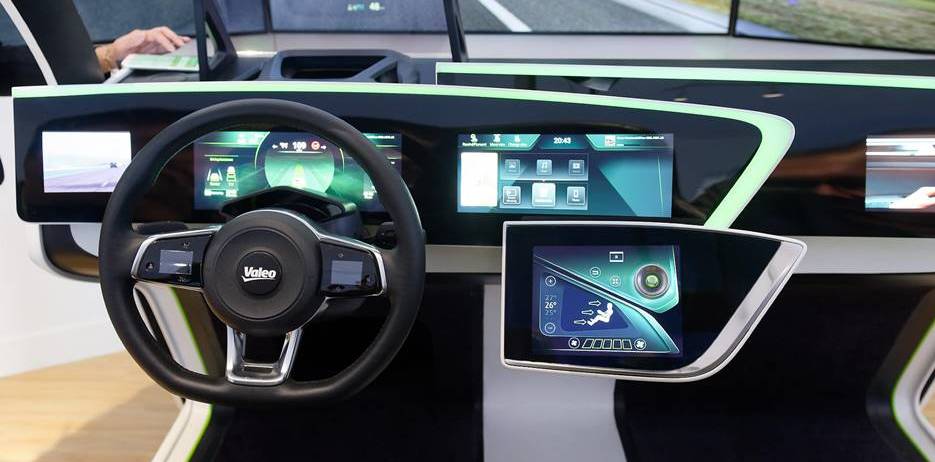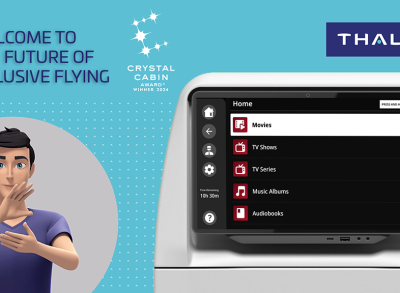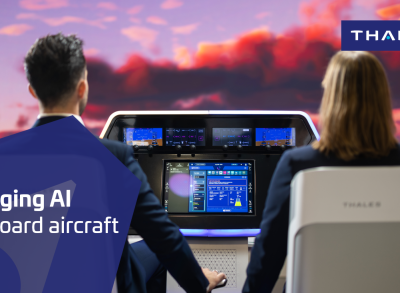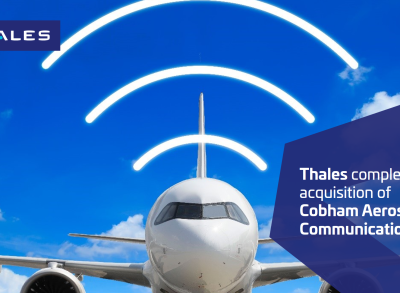Inspiring technologies at CES

The automotive sector is moving relentlessly in the direction of autonomous vehicles. A host of carmakers exhibited their concept cars at CES, some even offering test drives in the parking areas outside. This trend parallels the research conducted by Thales engineers over the last 30 years as we work to bring greater autonomy to aircraft cockpits — autopilot systems being just one of the first applications. Today, vehicle manufacturers are offering a variety of solutions to reduce driver workload, just as we’re doing for airline pilots. “But as well as autonomy, the real revolution this year was in the screens used in car dashboards, which are looking increasingly like an aircraft cockpit,” says Philippe Coni “Screens with a curved surface to match the curvature of the instrument panel could find their way into aircraft. In fact, our ODICIS single-display cockpit, which won a Janus award for forward-thinking design in 2012, is leading the way.”
MicroLED makes its debut
Another notable breakthrough in display technology was unveiled by South Korean tech giant Samsung, which offered show participants a first look at its MicroLED TV. This self-emitting technology makes it possible to build screens with as many microscopic LEDs as there are pixels. They're much brighter, lighter and more detailed than OLED screens and, importantly, microLEDs have a much longer lifespan than the organic material in OLED diodes.
Samsung's microLED components measure just 100 µm — that’s smaller than a grain of sand, or thinner than a human hair. And the image quality of this huge screen, dubbed The Wall, is impressive. Samsung claims a brightness of 2,000 cd/sq.m., which is three to five times brighter than LCD or OLED screens. The technology also offers lower power consumption, since no intermediate optical elements are needed, unlike LCDs and OLEDs. “In our constant quest to improve our display systems, micro-LED screens could be an interesting alternative for the cockpits of tomorrow, and we’ll be studying this technology for possible use in micro-imagers,” says Coni.
Artificial intelligence and IoT
Another clear trend at this year’s CES was the move from the Internet of Things to the Intelligence of Things, the objective being to use technology to make people’s lives easier, as reflected in Samsung’s slogan: “Less complexity. More simplicity.”
“The kind of bracelet used to monitor sleep patterns, presented by the French atomic energy agency CEA in the French Tech zone, for example, could help pilots and aircrews to manage jetlag,” adds Philippe Coni.
5G was also centre stage at CES, heralding new opportunities for faster, more efficient connections between people and devices. As the digital transformation of aviation continues, 5G is an area of particular focus for Thales, along with the closely related issue of cybersecurity, which was also a hot topic at CES.
130 million synapses on a chip
Artificial intelligence now has its own specially designed platform, the neuromorphic processor. Unveiled by Intel, the Loihi chip is designed to mimic the human brain, with its ability to learn on the fly, and will have no fewer than 130,000 neurons and 130 million synapses. “Intel’s Tangle Lake 49-qubit quantum processor isn't ready for the mainstream yet, but it’s already running in the laboratories at the Delft University of Technology, and it could pave the way for superpowerful computers utilising the properties of quantum entanglement and superposition of states made possible by quantum physics,” concludes Coni. “With our systems making ever greater use of AI, it’s another technology we’ll be studying very closely.”
We’ll be back at CES in 2019 for more exciting discoveries!
Photo: Philippe Coni - Thales
“
In our constant quest to improve our display systems, micro-LED screens could be an interesting alternative for the cockpits of tomorrow, and we’ll be studying this technology for possible use in micro-imagers.”
Stay connected with us...
Find us on Twitter @ThalesAerospace, on our official Youtube channel Thales Aerospace and on LinkedIn Thales Aerospace.




